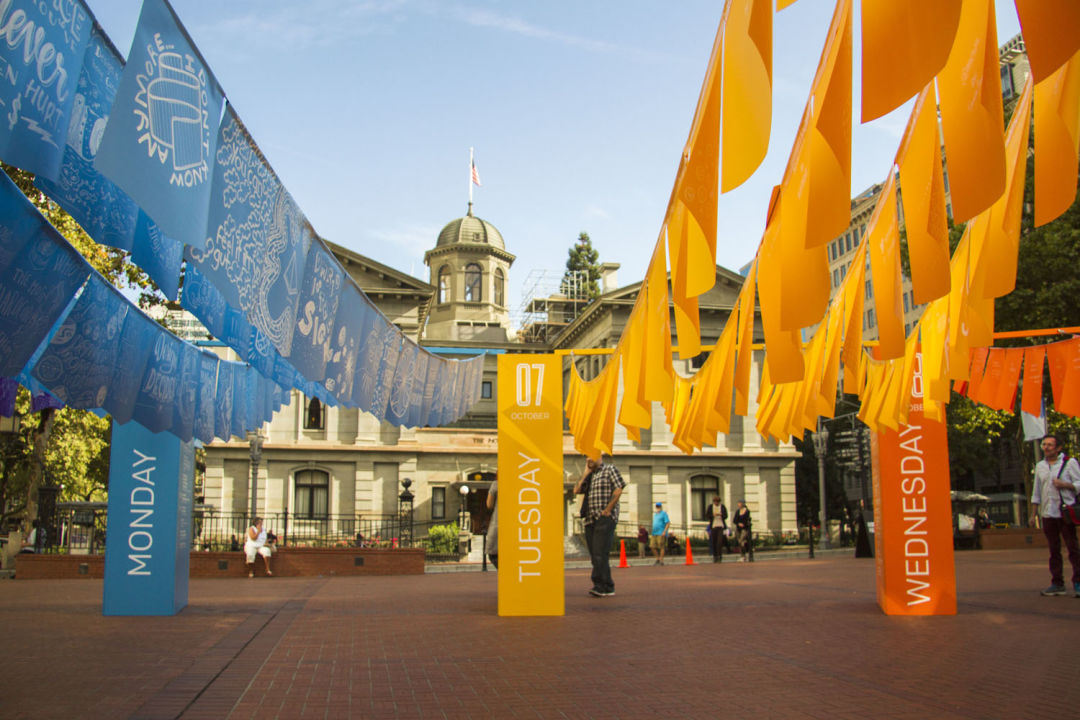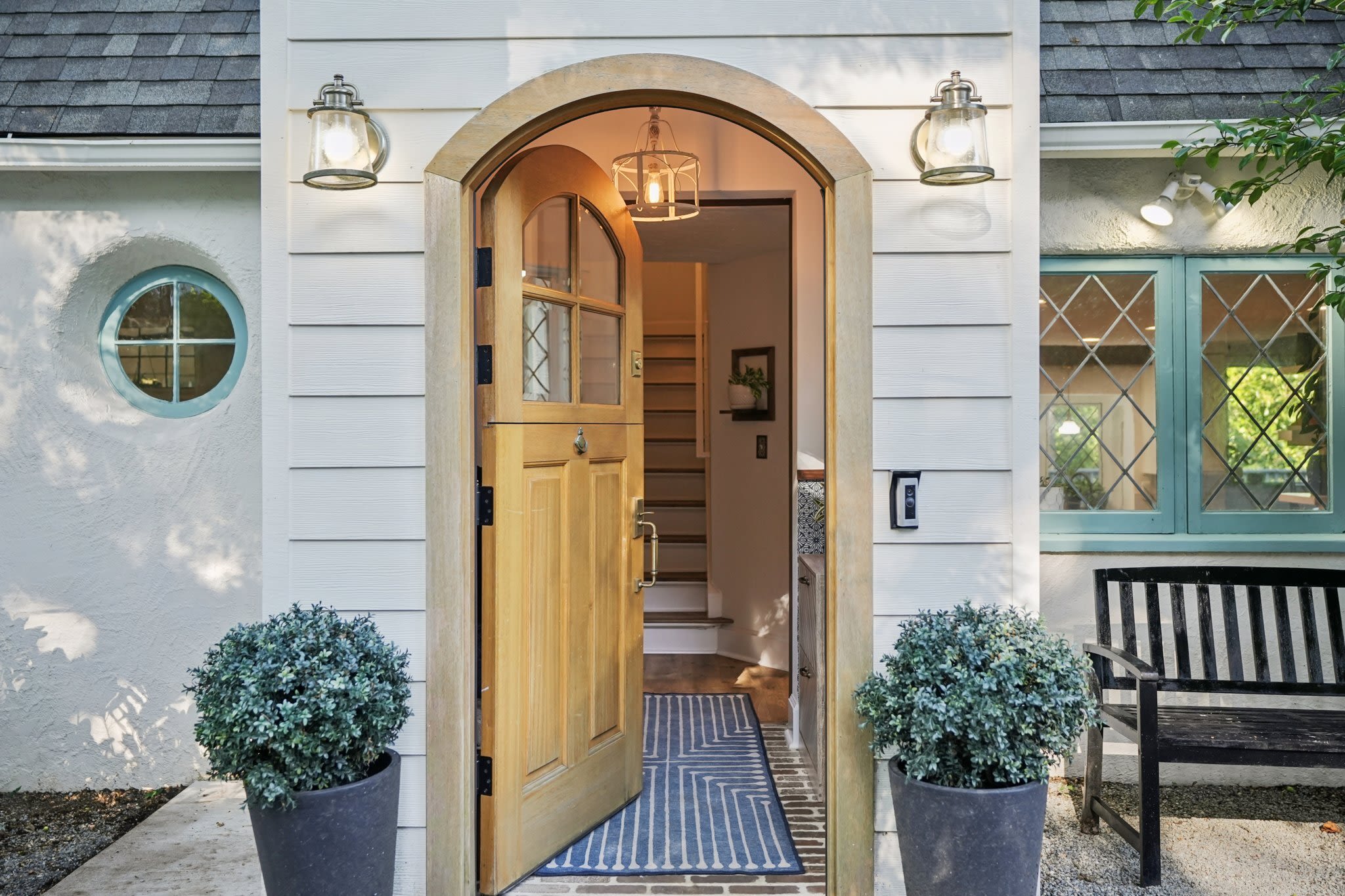Design Week Portland Returns With Bold Thinkers and Big Ambitions

Design Week Portland will transform Pioneer Courthouse Square into its public headquarters.
Design Week Portland launched in 2012 as a wide-ranging celebration of the city’s booming design community, with studio open houses, presentations, and events scattered across the city—less “programmed” than coordinated with improvisational verve. When DWP returns this spring, director Tsilli Pines aims to keep the freewheeling energy but also give the festival a heart at its center: a sun for the galaxy of disparate design events and open houses to orbit.
The most notable addition to the April festival is a Main Stage, a single-loop conference of 12 speakers comprised of design minds from both near and far. Modeled after TED Talks, each presenter will deliver a lecture pertaining to some aspect of the design industry or experience. We’re especially looking forward to the following speakers:
Genevieve Bell of Intel: “What Are the Animals Telling Us?”
Bell leads a team of social and computer scientists within Intel, seeking to apply the techniques of anthropology and the wisdom of the culturally attuned to the design processes behind new technology.
Rob Walker: “How Do We Win the War Against Seeing?”
Walker has contributed to everything from the Bloomberg Business Week to Slate, and offers counsel in the weekly New York Times advice column, “Workologist.”
Craig Dykers of Snøhetta: “Why [Do We] Bother?”
If the festival’s goal is to expand Portland’s reach nationally and internationally in the design world, then inviting the founder and principal of acclaimed Norway-based design collective Snøhetta is right on point. Born in Germany, Dykers is fluent in more than five languages, and his design firm has taken on everything from the September 11 Memorial Museum at the World Trade Center to the new face of the Norwegian krone bill, to be released next year.
In addition to the Main Stage, DWP 2016 will also host a competition to design the 6-mile pedestrian and bike pathway through the city, known as the Green Loop, first proposed in 2015 by the Bureau of Planning and Sustainability. Five judges will determine the winner, who will receive $20,000 toward bringing their design to life. One of these jurors is Mike Lydon, principal at the Street Plans Collective and a big advocate for “livable” cities. “The Green Loop is an opportunity to create far more than just another bike route,” says Lydon. “It will bring increased economic opportunity and allow for other public space, landscape, and transportation amenities that will strengthen Portland's core.” By combining local issues, national talent, and intelligent design, the festival will be demonstrating the merits of collaboration through this competition, possibly making it DWP’s most ambitious and important achievement.
“Our aim is really to expose people to work that’s happening at the forefront of every design discipline,” says Pines, “and one of the areas I think we’ve been successful is in the creation of happy collisions between disciplines.” The cross-pollination of ideas and minds continues with open houses and events across town.
Though the official schedule won’t be released until mid-February, expect something for everyone. The architects behind 10 Barrel Brewing will explore the the culture and design of the brewpub. An event series will focus on issues relevant to design freelancers, helping to shape up proposals and understanding the task at hand. And the downtown creative agency Parliament promises to somehow combine archery, projection mapping, and booze in the excellently eye-roll-inducing name, “Just the Tip: an evening that will make you quiver.”
Pines insists that DWP is for everyone interested in design, from students to working professionals to the layman. “The festival can be perceived as an insider event, for designers by designers,” she says. “But from workshops that really cater to design professionals to lectures that can expose someone who doesn’t know anything, for example, about how a shoe at Nike is designed, there’s something for everyone: it can really be an entry point.”




